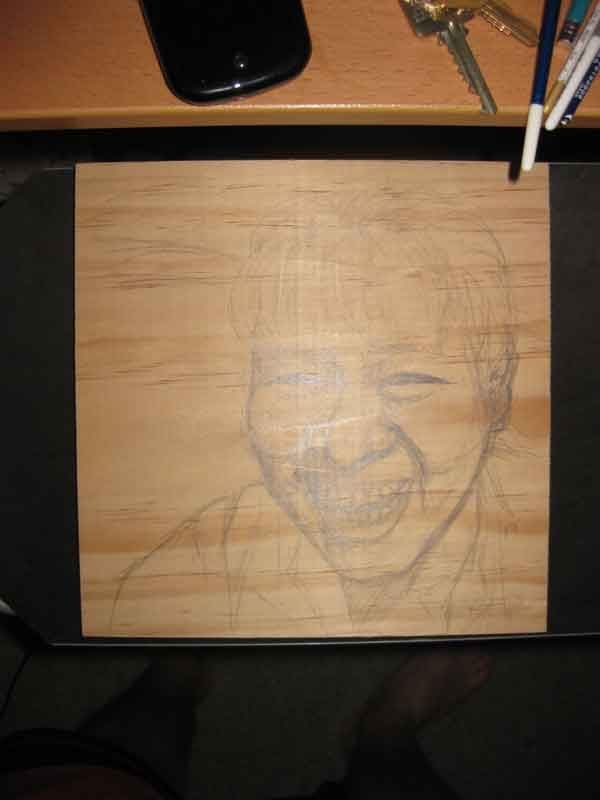I’d been painting these portraits with nondescript backgrounds. When I started to paint Cindy I didn’t want to have just a flat blur of color back there. I started off with the original background (this was from our day in the park doing kettle bells), but it was too plain, so I sort of went wild….



After painting this I sent it to Cindy. JC said I made her “more asian” and Cindy asked if her teeth were really that crooked. No, they are not. I’m still not getting any better at noticing these little mistakes until it’s too late.


For what it’s worth: a picture taken with a short focal length tends to distort the perspective. Thats why a ” normal” lens is 50mm and a “true” lens is 80-90mm. Also-skin tones have a lot more green than people realize—the eye tends to correct color faults “in real life” but sees whats on the canvas as abstract. Bill Gerhold (M.C. art prof) said the 3 most important tools of an artist is practice, practice, practice. Faces and bodies are the most difficult things to paint–don’t give up.
Thanks, dad. I tried to look up Gerhold, but could only find him referenced by former students and maybe 1 or 2 photos in google images. However, by accident during the search I found this guy: http://www.derekoverfield.com/2.html If this guy’s stuff wasn’t so accurate you couldn’t take it seriously, but since he fleshes out the body so accurately in such a hurried fashion it displays a great amount of skill and knowledge of the body. I’ve always sort of wondered if I could sketch out the figure on canvas or paper… work with it a bit and just leave it like that. Instead I always put in a background of some kind and keep scratching away. This guy just leaves it with that original sketch, often using felt-tip marker (which I always thought was a no-no) to outline as well.